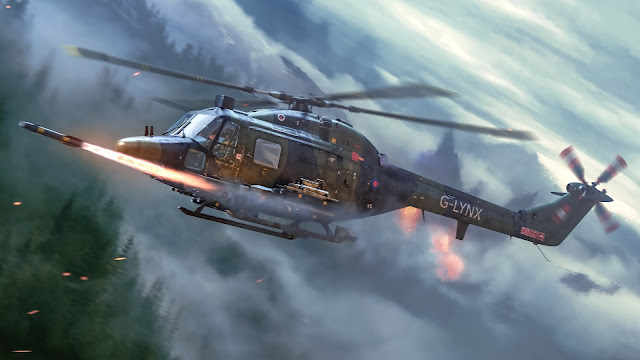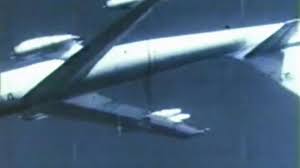FutureWarTHINK 021: Weaponized Catamaran AeroHydro SFBs
The point
is that the USCG are a RESCUE & LAW ENFORCEMENT bureaucracy NOT EVEN IN
DoD!
WHY are they even in the Persian Gulf doing the USN's dirty work?
They are
NOT going to have Anti-Ship Missiles (ASMs) to do NAVAL WARFARE properly.
They
COULD have a helipad for helos or a crane to operate small, folding wing
seaplanes.
https://1sttac.blogspot.com/2021/02/future-warthink-021-weaponized.html
https://en.wikipedia.org/wiki/USCGC_Adak
Initial
actions during Operation IRAQI FREEDOM
The
maritime conditions of Iraq and the Northern Persian Gulf can greatly limit the
operations of large naval vessels and warships. Due to this and the Navy's lack
of in-shore patrol craft, a large part of the U.S. Navy's request for Coast
Guard assistance in Operation Iraqi Freedom (OIF) centered on the service's
shallow-draft patrol boats. Cutters of the 110-foot Island class, also
known as WPBs, would serve as the mainstay of shallow-water operations. The
deployment of the 110-foot patrol boat Adak serves as a snapshot of WPB
operations in OIF. Deployment of the WPBs overseas would represent the first
combat deployment of Coast Guard patrol boats since the Vietnam War, even
though other Coast Guard assets had served in operations Desert Shield and
Desert Storm in the 1990s.[6]
In early
February 2003, the Coast Guard’s Atlantic Area Command deployed to the Persian
Gulf the WPBs Adak, Aquidneck, Baranof, and Wrangell. The 110s
arrived in Bahrain, at the beginning of March, having ridden on board MV Industrial
Challenger for thirty-five days. On March 5, a heavy-lift crane
off-loaded the WPBs taking only six hours to set all four in the water. Adak
ran through sea trials for two days and on 9 March, Adak and sister ship
Aquidneck deployed to the Persian Gulf followed by Baranof and Wrangell
on 12 March.[6]
In the
days leading up to combat operations, Adak focused on maritime
interdiction operations. Coalition vessels had restricted passage of local
watercraft out of the Khawr Abd Allah (KAA) Waterway, thinking that these
vessels might carry mines or escaping Iraqi officials. By mid-March, local
watercraft had attempted several breakouts with fleets of dhows and small boats
and, on 17 March, a large breakout consisting of sixty Iraqi watercraft
attempted to evade Coalition units. With the vessels scattering in all
directions, Adak, Wrangell, and their small boats, aided
by other Coalition units, managed to corral all of the Iraqi watercraft and
board them. None of the vessels carried escaping Iraqi leaders and all had
discharged any illegal cargoes typical of small smuggling vessels. After
boarding teams had thoroughly searched the dhows, Adak and the other
patrol vessels allowed the watercraft to proceed along a specific route into
the northern area of the Persian Gulf.[6]
In the
early morning hours of 20 March, Coalition forces initiated combat operations
with air attacks against key military targets in Baghdad. The Adak and Aquidneck
enforced a security zone while the USS Higgins launched Tomahawk
Land Attack Missiles into Iraq.[7][8] In addition, Coalition forces had to
secure Iraq's Khor al-Amaya Oil Terminal and Mina al Bakr Oil Terminal to
prevent environmental attack by the Iraqi regime. On the evening of 20 March,
SEAL teams supported by Polish Special Forces personnel, stormed the oil
facilities. During the operation, Adak, along with Baranof, maintained
security around the terminals to prevent reinforcement or escape by Iraqi
military forces. After the SEALs cleared the terminals of Iraqi personnel,
weapons and explosives, Coast Guard personnel from Port Security Units 311 and
313 arrived to secure the facilities.[6]
Next
Adak received orders to patrol the KAA Waterway, so by the early morning
hours of 21 March, Adak had steamed up the KAA to serve as a guard ship.
In fact, of the 146 Coalition naval units in the Persian Gulf, Adak
stationed itself deepest in enemy territory and served as the "tip of
the spear" for Coalition naval forces. During its early morning
patrol, Adak and navy patrol Chinook surprised and stopped two
down-bound Iraqi tugboats, including one towing a barge, and ordered them to
anchor. At first, the vessels raised no suspicions for they ordinarily serviced
tankers and smaller watercraft that plied local waters. But the two patrol
vessels continued guarding the tugs and a special boarding team composed of
Australian and American explosives experts searched the tugs and barge and
found concealed within them a total of seventy contact and acoustic mines.
Had they been released, the mines could have sunk or heavily damaged Coalition
naval vessels operating in the Persian Gulf. The team secured the tugs and Chinook
transported the tug crews back to a Coalition naval vessel for processing. The
captain of one of the mine-laying tugs admitted that the sight of the "white
patrol boat" had prevented him from deploying his deadly cargo.[6]
Throughout
21 March, the captain and crew of Adak experienced a great deal of excitement.
At 06:00, Australian and British frigates began naval fire support operations
in what became known as "Five-Inch Friday". The warships
poured nearly 200 rounds of four-and-a-half-inch (114 mm) and five-inch (127
mm) shells into the Iraqi defenses while Adak screened the vessels to
ensure that no unauthorized watercraft approached. During this time, Mackenzie
and his men felt buffeting from the explosions of hundreds of bombs and shells
lobbed on shore. British Royal Marines, supported by U.S. Navy and Royal
Navy hovercraft, commenced the amphibious assault on the Al-Faw
Peninsula; the largest amphibious operation carried out since the Korean
War.[6]
During
the landings, an Iraqi PB-90 patrol boat had been cruising upstream on
the KAA Waterway and positioned itself where it could threaten low-flying
Coalition helicopters and provide early warning reports to land-based Iraqi
forces on the Al Faw Peninsula. To engage the PB-90, the Coalition command
center vectored in an AC-130 gunship, which destroyed the Iraqi
vessel. Afterward, a Coalition helicopter spotted three surviving
crew members floating down the KAA and notified Adak of their location. Adak
conducted Combat Search and Rescue (CSAR) operations, recovered three hypothermic
Iraqis at 8:30, and transferred the prisoners to an Australian naval vessel for
processing. Coalition experts later identified the men as warrant officers from
Iraq's Republican Guard.[6]
After Coalition
forces wrapped up the initial phase of combat operations, Coalition planners
focused on opening the KAA Waterway to vessel traffic. Wrecks from the
Iran–Iraq War and the First Gulf War still littered the KAA and its shores, but
mines proved a greater concern. Some mines still remained in the waterway
from Operation DESERT STORM. Minesweeping operations began on 22 March,
with navy [MH-53E] Sea Dragon helicopters towing minesweeping sleds
along the waterway. Mackenzie received orders for Adak to join sister
ship Wrangell, and navy patrol craft Chinook and Firebolt
to escort U.S. Navy and Royal Navy minesweepers up the KAA. The process
proved slow as the minesweepers proceeded at a rate of three knots (5.6 km/h;
3.5 mph) up the forty-mile (64 km) channel to the Iraqi port of Umm
Qasr. The patrol boats had to stand off 1,000 yd (914 m) from the
minesweeping vessels and they often had to station themselves upriver from the
minesweepers. On several occasions, the minesweepers located mines in waters
previously navigated by the WPBs and, on one occasion, Adak's crew
listened as the patrol boat contacted a mine that came to the surface and
failed to detonate.[6]
It took
about a week to complete mine-clearing operations on the KAA and with Umm Qasr
in Coalition hands, cargo vessels could begin steaming into the Iraqi port.
Naval combat operations concluded near the end of March, but Adak joined
the other WPBs to continue their force protection role and served as escorts
while the navy salvage vessel Grapple and the tugboat Catawba
removed obstructions in the waterway. On 28 March, Coalition forces sent the
first shipload of humanitarian aid into Umm Qasr on board the shallow draft
Royal Fleet Auxiliary Sir Galahad under the escort of Adak, Wrangell,
a minesweeper and patrol craft Firebolt. Adak and its crew continued
escort duties along the KAA into early April. On 11 April, Adak escorted
Iraq's first commercial shipment on board MV Manar, which carried 700
tons of Red Crescent Society aid of food, water, medical supplies and transport
vehicles. Meanwhile, Adak received orders to return to base and, on 12
April, Adak redeployed to Bahrain after completing a thirty-five-day
non-stop deployment to the NAG.[6]
On 9
April, organized resistance had ceased in Baghdad, followed in mid-April by a
cessation of resistance in most other Iraqi cities. On 1 May, President George
Bush announced the end of combat operations in Iraq and the Coalition’s
offensive operations came to a close. During OIF, Adak, its sister ships
and their crews brought many vital capabilities to the theater of
operations. The patrol boats operated for many hours without maintenance in
waters too shallow for most naval vessels and served as the fleet's workhorses
in boarding, escort duty, force protection and maritime interdiction operations.
The characteristic white hulls of the WPBs also provided a less antagonizing
presence in a highly volatile region. As in past Coast Guard combat missions,
such as Vietnam, Coast Guard patrol boats and personnel exceeded all
expectations in shallow-water and in-shore maritime operations. Given the
frequency that hostilities erupt in the world's littoral regions, shallow-draft
Coast Guard units and their specialized personnel will continue to play an
important part in future naval operations.[6]
Operations
ENDURING FREEDOM and INHERENT RESOLVE
In a historical twist, the Adak, Aquidneck, and Higgins
found themselves working together again. During the 2018 missile strike against
Syria, the Higgins launched 23x TLAMs into Syria while Adak and Aquidneck
enforced a security zone for her.
****













This comment has been removed by the author.
ReplyDeleteTank Small Fast Boats
ReplyDeletehttps://www.youtube.com/watch?v=UWxS1NusEA4
The BS ending that USMC doesn't need SFBs is intolerable; there will be no F-35Bs once the bloated TIN CAN amphibs are in flames from PDMs. Smaller, armored motherships are needed to operate SFB swarms each with ASMs and a lot of autocannon shells like the 40mm as some suggest and some self-defensive SAMs.